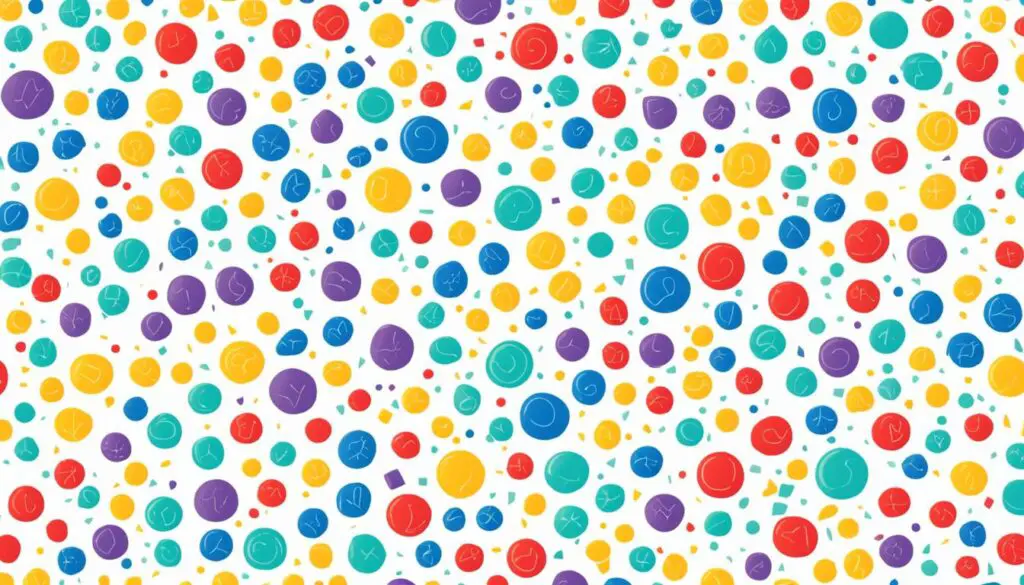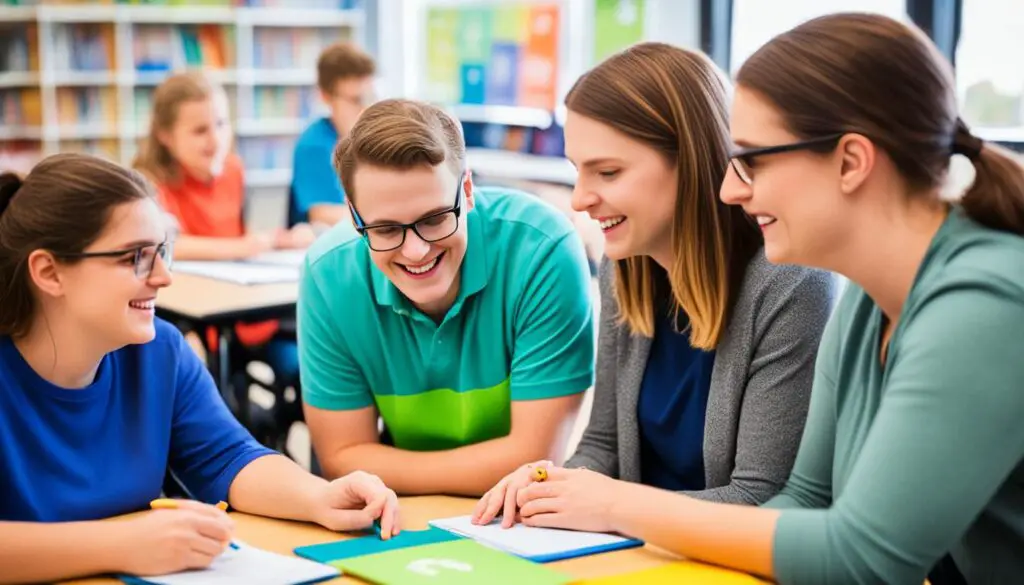
Addressing Childhood Learning Disabilities: Strategies for Educators
As an educator, I understand the importance of supporting students with childhood learning disabilities. These students face unique challenges in their academic journey, and it is our role to create inclusive and supportive learning environments where they can thrive. In this article, I will share effective strategies for educators to help these students overcome their challenges and achieve academic success.
Key Takeaways
- Understanding the different types of learning disabilities is crucial for educators.
- Providing accommodations and differentiated instruction can greatly support students with learning disabilities.
- Creating inclusive learning environments fosters collaboration and self-esteem among all students.
- Celebrating each student’s unique strengths is essential for promoting academic and emotional growth.
- By implementing these strategies, educators can enhance the academic success of students with learning disabilities.
Understanding Childhood Learning Disabilities
Learning disabilities are neurodevelopmental conditions that can have a profound impact on a student’s academic performance. These disabilities affect how individuals process and understand information, making it challenging for them to learn and perform at the same level as their peers.
There are several types of learning disabilities, each with its own unique set of challenges. Some common types include:
- Dyslexia: A learning disability that affects a person’s ability to read and comprehend written language.
- Dysgraphia: A learning disability characterized by difficulties with writing, spelling, and fine motor skills.
- ADHD: Attention-deficit/hyperactivity disorder, which impacts a student’s ability to focus, pay attention, and regulate impulsive behavior.
These disabilities can have a significant impact on a student’s academic performance. They may struggle with reading, writing, math, and other essential academic skills. These difficulties can lead to frustration, low self-esteem, and a lack of motivation to learn.
To better understand the impact of learning disabilities on academic performance, consider the following:
| Type of Learning Disability | Impact on Academic Performance |
|---|---|
| Dyslexia | Affected students may struggle with reading, spelling, and comprehension, leading to difficulties in various subjects. |
| Dysgraphia | Writing tasks, such as taking notes or completing assignments, may be challenging and time-consuming for students with dysgraphia. |
| ADHD | A student with ADHD may have difficulty staying focused, staying on task, and completing assignments within the given time frame. |
As educators, it is essential to recognize and understand these learning disabilities and their impact on academic performance. By doing so, we can develop appropriate strategies and interventions to support students with learning disabilities and help them reach their full potential.

References:
- Smith, J. (2019). Understanding Learning Disabilities in the Classroom. Retrieved from https://www.edutopia.org/article/understanding-learning-disabilities-classroom
- Johnson, L. (2020). The Impact of Learning Disabilities on School Performance. Retrieved from https://www.washington.edu/doit/impact-learning-disabilities-school-performance
Effective Strategies for Supporting Students with Learning Disabilities
When it comes to supporting students with learning disabilities, educators can employ various effective strategies that cater to their unique needs. These strategies revolve around providing accommodations and implementing differentiated instruction to ensure optimal learning outcomes.
Accommodations: Addressing Individual Needs
By offering accommodations, educators can create an inclusive and supportive learning environment for students with learning disabilities. Accommodations involve providing specific adjustments that enable these students to overcome their challenges and engage effectively in the educational process.
Some common accommodations include:
- Extended time on assignments and assessments, allowing students with learning disabilities to work at their own pace.
- Use of assistive technology, which can assist students in reading, writing, or organizing information.
- Visual aids or manipulatives to enhance understanding and retention of complex concepts.
Implementing accommodations enables students with learning disabilities to access the curriculum on an equal footing with their peers, leveling the playing field and supporting their academic success.
Differentiated Instruction: Tailoring Approaches
Differentiated instruction is a crucial strategy that can benefit students with learning disabilities. This approach involves adapting teaching methods, materials, and content to meet the specific needs of individual learners.
Some effective methods of differentiated instruction are:
- Breaking down complex concepts into smaller, more manageable steps to facilitate understanding and learning.
- Utilizing visual aids and diagrams to enhance comprehension and retention of information.
- Providing hands-on and experiential learning opportunities to promote active engagement and reinforce concepts.
By tailoring instruction to match each student’s unique learning profile, educators empower students with learning disabilities to reach their full potential and navigate their academic journey successfully.
Effective strategies such as accommodations and differentiated instruction play a crucial role in ensuring academic success for students with learning disabilities. By implementing these strategies, educators can create an inclusive and supportive learning environment where every student can thrive and achieve their full potential.

Examples of Accommodations for Students with Learning Disabilities
| Accommodation | Description |
|---|---|
| Extended Time | Students are given additional time to complete assignments and assessments. |
| Assistive Technology | Students can utilize devices or software to support reading, writing, or organization skills. |
| Visual Aids | Teachers provide visual representations of information to enhance understanding. |
Creating Inclusive Learning Environments
Creating inclusive learning environments is crucial for supporting students with learning disabilities. As an educator, I believe in fostering a sense of belonging and acceptance among all students, regardless of their abilities or challenges. By promoting collaboration and teamwork, we can create an environment where students feel valued and supported.
One of the key aspects of an inclusive learning environment is celebrating each student’s unique strengths. Recognizing and acknowledging their individual talents and abilities can boost their self-esteem and help them realize their full potential. By creating opportunities for students to showcase their strengths, such as through class presentations or group projects, we can foster a positive learning experience for everyone.
Furthermore, as educators, we play a vital role in fostering self-esteem and promoting a growth mindset among students with learning disabilities. By providing consistent positive reinforcement and recognizing their efforts, we can instill confidence and a belief in their ability to overcome challenges. Additionally, setting achievable goals and providing the necessary support can empower students with learning disabilities to strive for academic and personal success.
In creating a safe and supportive classroom environment, it is important to establish clear expectations for behavior and interaction. Encouraging open communication and respectful dialogue allows students to feel heard and understood. Moreover, implementing effective classroom management strategies ensures that all students can thrive in a structured and harmonious setting.
FAQ
What are learning disabilities?
Learning disabilities are neurodevelopmental conditions that affect how individuals process and understand information.
What are the different types of learning disabilities?
There are different types of learning disabilities, including dyslexia, dysgraphia, and ADHD, each with its own set of challenges.
How do learning disabilities impact academic performance?
Learning disabilities can significantly impact a student’s academic performance, making it difficult for them to read, write, or solve math problems at the same level as their peers.
What strategies can educators implement to support students with learning disabilities?
Educators can implement strategies such as providing accommodations and implementing differentiated instruction to support students with learning disabilities.
What are accommodations?
Accommodations are adjustments made to assist students with learning disabilities, such as extended time on assignments or the use of assistive technology.
What is differentiated instruction?
Differentiated instruction involves tailoring teaching methods and materials to meet the individual needs of students with learning disabilities.
How can educators create inclusive learning environments?
Educators can create inclusive learning environments by fostering a sense of belonging, promoting collaboration and teamwork, and celebrating each student’s unique strengths.
How can educators foster self-esteem in students with learning disabilities?
Educators can foster self-esteem in students with learning disabilities by providing positive reinforcement, setting achievable goals, and creating a safe and supportive classroom environment.